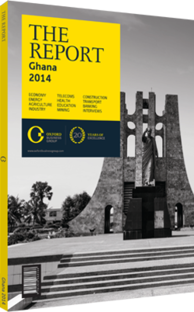The government focuses on distributing resources more equitably
Economic development in Ghana has been uneven. The areas in the north – the Northern Region, the Upper West Region and the Upper East Region – have historically been less well off and have tended to benefit less from growth than the rest of the country. It is a persistent disparity that is now beginning to get considerable attention: new government measures target improved conditions in poorer, rural and more remote areas. The difference between the two regions has implications for the future of the entire country, and there is widespread agreement that steps must be taken to improve conditions in these regions.
In the north, more than 70% of the population lives on less than $1 per day, compared to a national average of 28%. Some four-fifths of Ghana’s poor live there, and 36% of under-fives suffer from malnutrition. Serious differences also remain between sub-regions, and between urban and rural areas. In some parts, the poverty rate is above 90%, and more than 60% of the population has a daily intake of less than 1800 calories. It is a place of significant instability, otherwise a rarity in Ghana: 15 major conflicts have taken place there in recent years. The World Bank believes that poverty might be eliminated in the south by 2030, but that 40% of the northern population will still be poor.
Weather & History
This great divide is largely a function of history, climate and geography. The north has a drier climate, so its farms have been less productive. The region is also prone to extreme weather events, and often faces flooding and drought. Some parts are very remote, making it hard to get goods to market and, given the distances, to negotiate a fair price.
Some help has been at hand. The agricultural revolution in the 1970s helped boost rural wages. Non-government organisations and foreign donors have long been active in working to close the north-south disparity. Some success has been reported, and development indicators have risen faster in the north than elsewhere in the country. But other efforts have been largely ineffective. According to the World Bank, public resources are not always allocated evenly, hitting targeted areas but then missing other regions, and “donorfunded projects have often lacked coordination and sectoral focus has been patchy at best”.
Such programmes, the report added, do not cover key governing institutions such as justice, police and regional administration, or private sector bodies such as business associations and farmers.
No Booms
The growth Ghana has seen in recent decades has not been felt as keenly in the north. While in the south 2.5m people were lifted out of poverty between 1992 and 2006 thanks to rising incomes, the north saw an increase of 1m. The oil boom that followed has had a limited effect on the labour market and thus helped but little. While Ghana’s exports have risen, the impact on remote areas has been minimal. The expectation of oil money that would allow Ghana to invest in the north, such as in schools, roads and health care, has not yet materialised – indeed, some estimates of oil’s impact put the per capita figure at $50 a year.
The government is now pushing to develop the region. A bill passed in 2010 authorised the creation of the Savannah Accelerated Development Authority and charged it with helping the north grow in a sustainable and environmentally friendly manner. The authority is tackling hunger, child mortality, sanitation and agriculture with programmes that target food crop production while taking into account flood-prone riverbeds and other local environmental factors. The Northern Development Strategy, meanwhile, is designed to help develop agriculture in the north with the specific aim of serving nearby markets in Togo and Côte d’Ivoire.
The hope now is that foreign investment will play a role. Public-private partnerships have been suggested, and support for small and medium-sized enterprises is being encouraged. According to the Ghana Investment Promotion Agency, less than 0.1% of foreign investment goes to the north. The sense is that, if investors can be made aware of the attractions of the resource-rich north they will commit their capital to it.
You have reached the limit of premium articles you can view for free.
Choose from the options below to purchase print or digital editions of our Reports. You can also purchase a website subscription giving you unlimited access to all of our Reports online for 12 months.
If you have already purchased this Report or have a website subscription, please login to continue.

